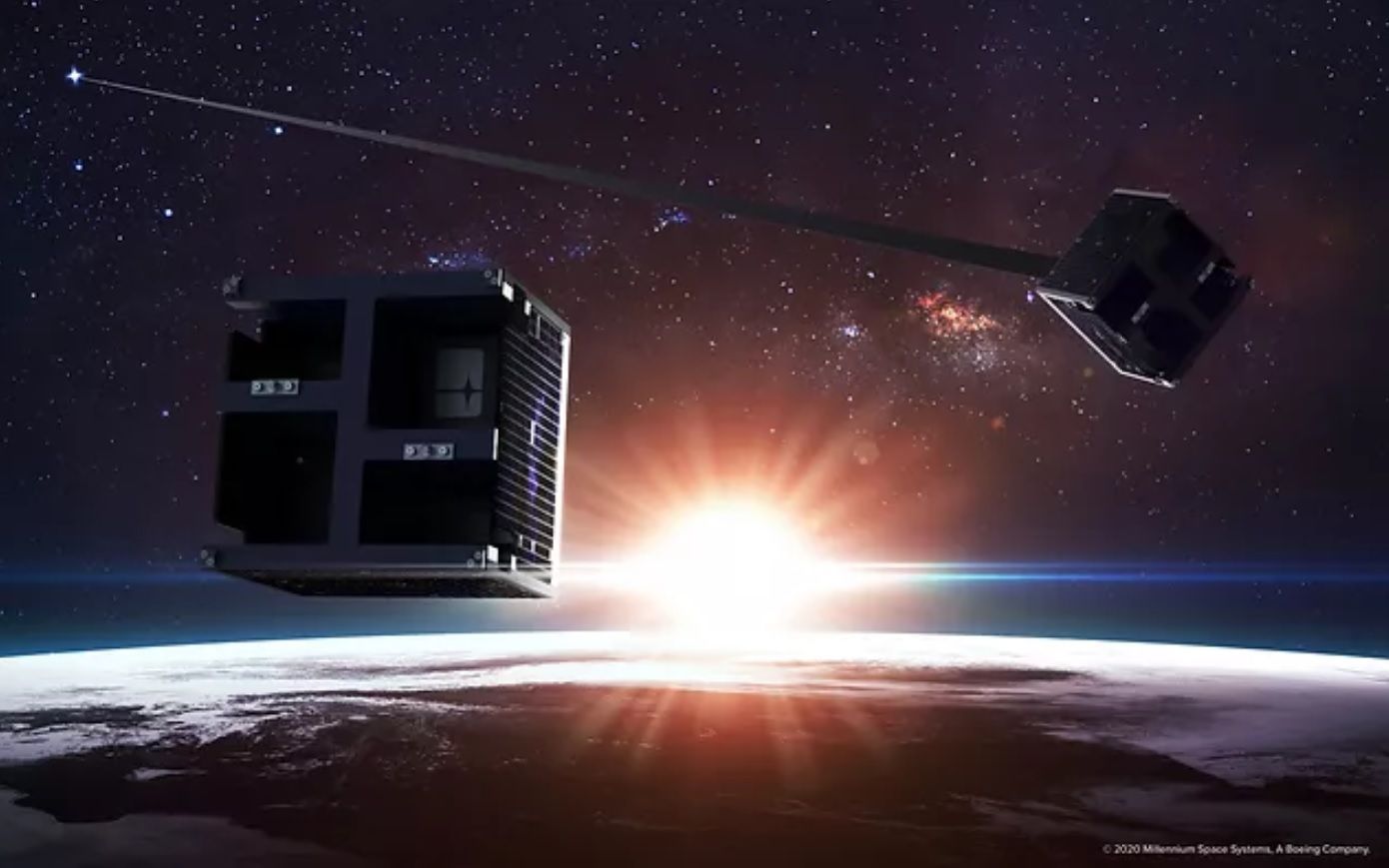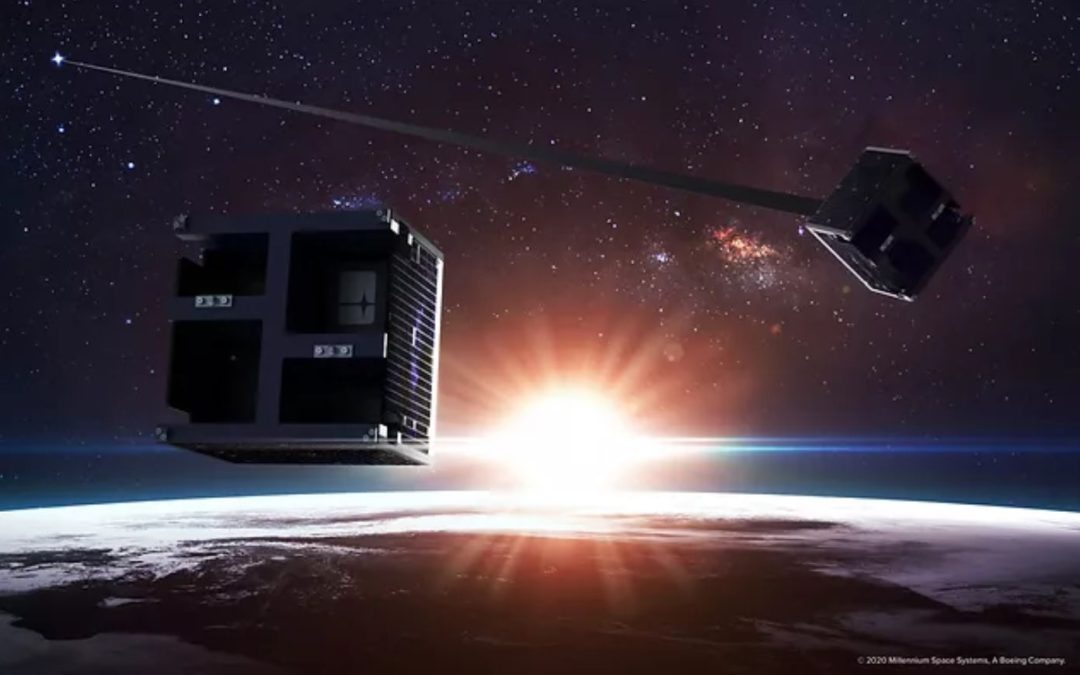
Millennium Space Systems has completed qualification testing of a pair of 6U CubeSats built for demonstrating new advancements in enhanced de-orbiting of satellites in Low Earth Orbit (LEO) in a mission called DRAGRACER. The two satellites, built by Millennium Space Systems, will perform an experiment where the de-orbiting process of one of them is accelerated by the deployment of a 70-meter-long thin conductive tape, developed by Tethers Unlimited Inc., whereas the other will function as a baseline case for comparison of just how much more effective the enhanced de-orbiting really becomes. Both CubeSats have the same stowed mass properties and the same drag coefficients.
The underlying science of this mission is that satellites in LEO are subject to atmospheric drag. The atmosphere, although very thin at those altitudes (2000 kilometers or less), causes a tiny friction to the movement of the satellites in their orbits, making the satellites gradually lose speed and hence have their orbits gradually spiral towards the Earth. Eventually the satellites will plunge down into the Earth’s atmosphere. This happens at very high speed, and a small CubeSat won’t survive the process but rather burn up in the atmosphere on its way down. This process is the natural de-orbiting of a satellite. For a typical CubeSat like the DRAGRACER satellites, this process will take quite some time. Simulations have shown that the untethered satellite will remain in orbit for 7-9 years.
To more effectively avoid any collision risks that a no longer used satellite may pose during the natural de-orbiting process, LEO satellites these days are often equipped with means to bring the satellite down faster. Propulsion systems are a classical example of what to equip a CubeSat with to be able to do this. The two companies now want to demonstrate that the same kind of enhanced de-orbiting is possible using Tethers Unlimited’s Terminator Tape tether solution. In order to prove that it works, they’ve chosen to compare the two almost identical satellites – the only difference being that one is equipped with the space tether and the other is not – and see how much faster the satellite with the tether de-orbits compared to the untethered one. Once deployed, the 70-meter-long tape will cause extra drag on the tethered satellite, thus making the process of de-orbiting go faster. Simulations suggest that the tethered one will de-orbit in less than two months.
The name of the satellite pair – DRAGRACER – thus almost speaks for itself when it comes to describing the mission. The purpose is to have the satellites race down into the Earth’s atmosphere with the satellite equipped with Tethers Unlimited’s tape solution taking advantage from the extra drag. The deployment of the tether will be triggered by an on-board timer a few days after the deployment of the satellites from the rocket. Upon completion, the mission will yield an empirical result for how much more efficient the tape makes the de-orbiting process. The more efficient de-orbiting that can be achieved, the better news for all the CubeSat constellation builders out there concerned about increasing space debris.
Quoted in a recent press release from Millennium Space Systems on the topic, the company’s founder and CEO Stan Dubyn said that the “scientific method experiment will demonstrate Millennium’s ability to field and fly a low-cost and straightforward orbital debris mitigation solution”, adding an emphasis on the advantages of space tethers thanks to low mass, low complexity and small volume required. Quoted in the same press release, Tethers Unlimited’s founder and CEO Dr. Robert Hoyt said that “[t]he space community understands tether systems can expedite reentry, but this is our first opportunity to truly quantify performance directly and more effectively calibrate models developed over the last 50 years.”
The two satellites will now be shipped to New Zealand, where they will be made ready for launch on a Rocket Lab Electron rocket later this year. The launch integration work will be done by TriSept Corporation.
(Photo credit: 2020 Millennium Space Systems. A Boeing Company.)





